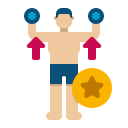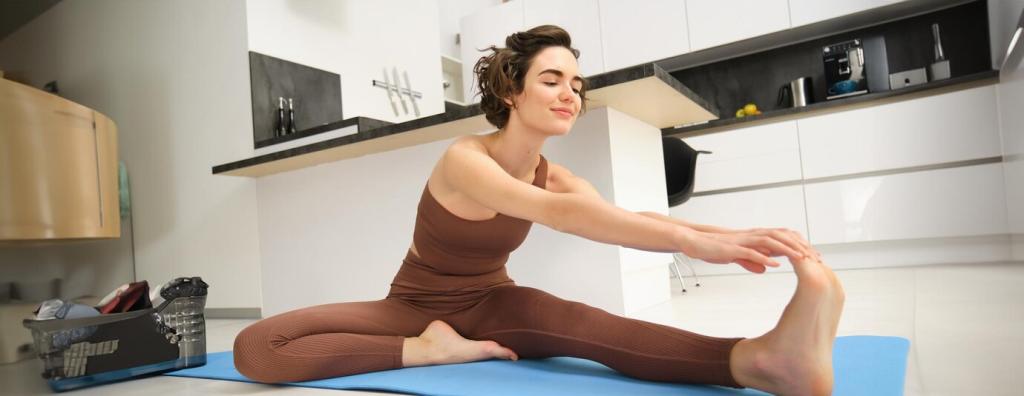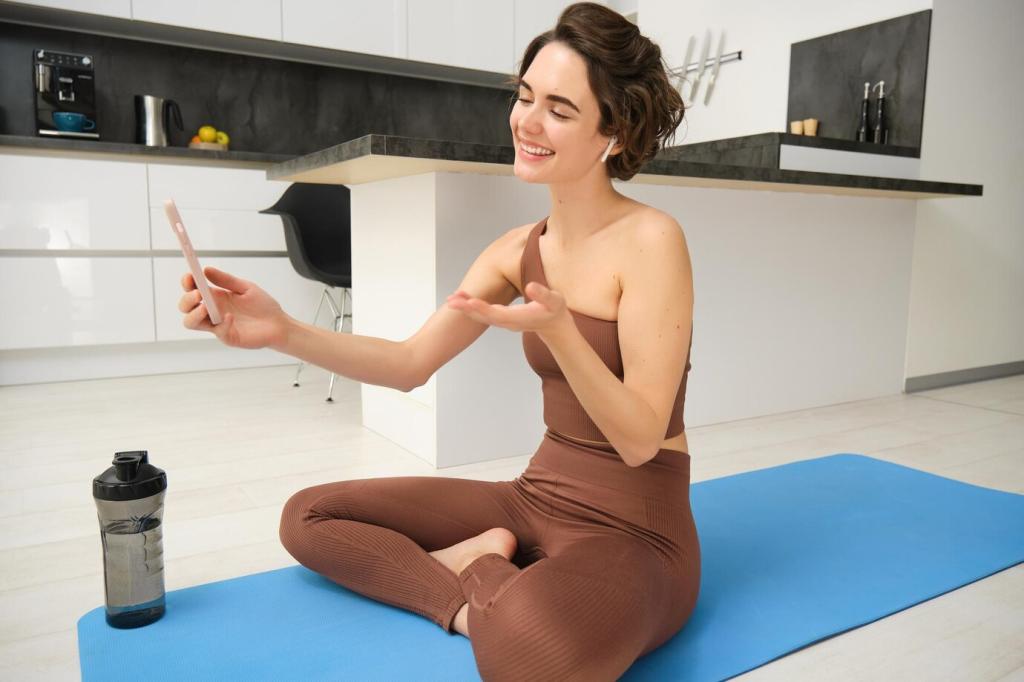Progress Tracking and Community
Track comfortable forward fold distance, controlled push-ups from knees or toes, and balance time in half moon. Record notes after practice, or take occasional videos to observe alignment changes that your busy mind might otherwise miss entirely.
Progress Tracking and Community
Schedule two strength-leaning flows, two mobility-leaning flows, and one restorative session weekly. Progress complexity slowly, deload every fourth week, and honor rest. This cadence builds capacity without burnout, making flexibility gains feel stable and strength feel refreshingly sustainable.




